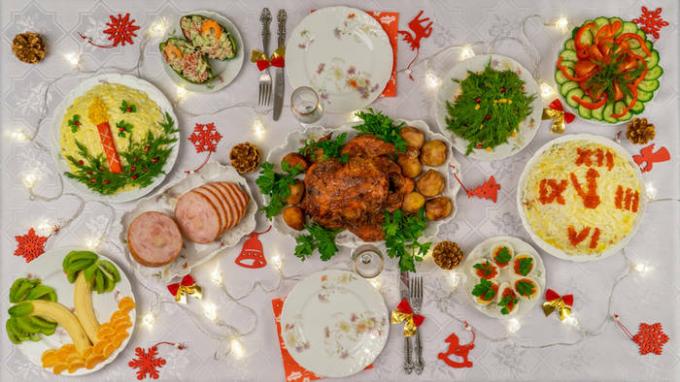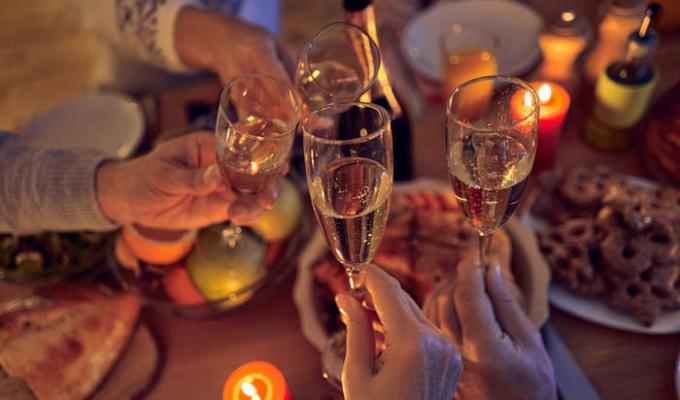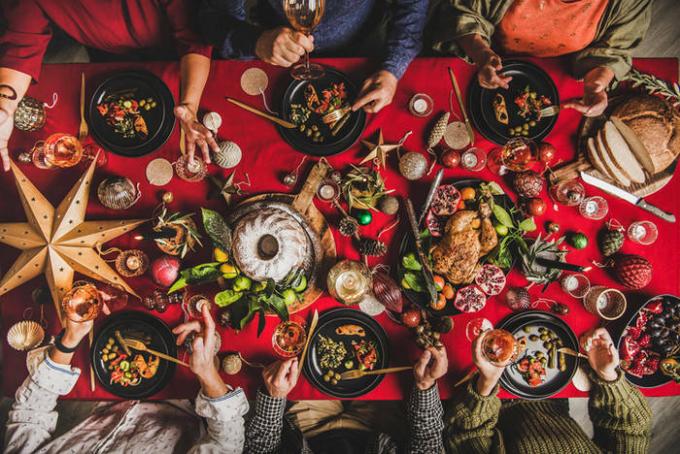It is customary to prepare for the New Year holidays in advance, buy a lot of products, spend two days preparing food - and then eat up the "leftovers" for another week.
A common situation: you cooked a lot of dishes, spent a lot of time, but in the end, almost nothing was eaten during the night - and you have to shove food into the refrigerator in an unimaginable way. In fear of cooking too little, we usually cook too much, and then throw away some of the food. How to determine the optimal number of dishes that need to be prepared, so that there are not many, and not enough?
1. Decide how many people are attending the feast
It sounds strange, but inviting a lot of guests to celebrate the New Year is profitable. No matter how many there are, you will still prepare a large amount of food: salads, cuts, roasts, cake, etc. A if there are a lot of guests, then your efforts will not be wasted and you will not have to lay out untouched food on small bowls.
If among the guests there are children who are losing weight, vegetarians and other people with a special menu, consider small portions of separate dishes for them or prepare common meals in such a way that they fit everyone.

2. Add light meals
Arrange a buffet for your guests before a full-fledged feast - slicing fruits, canapes, an aperitif. After all, usually everyone tries not to eat in advance, they sit down at the table closer to midnight, they gorge themselves very quickly from hunger - and no one wants anything further.
With the help of a buffet table, you will help the guests to satisfy their hunger and not to glance at the clock with one thought - "when we will eat there." For one person, 2 glasses of champagne and 5-6 canapes will be enough.
3. Cold snacks
If you cook meat / fish and cheese cuts on the table, then count on about 75 g of meat and 75 g of cheese per person. Pickles and pickled mushrooms do not need to count on everyone, just put a couple of small bowls with them and add food as needed.
Aspic will need about 100-150 g per person. For a feast, 2-3 types of salads are quite enough: one more "heavy" and two "lighter". Try to use a minimum of mayonnaise (replace it with light dressings) and make at least one salad with fresh vegetables. Each salad can be prepared at a rate of 100-150 g per person.

4. Hot meals
Expect 200 g of meat / fish and 150 g of side dish per person. Ideally, there should be two side dishes so that guests have a choice. For example, potatoes and baked vegetables.
5. Sweet
Few people will be able to master the cake at the end of the New Year's meal, so the dessert should be as light as possible. Before serving sweets, it is better to walk with the whole company in the fresh air and work up a little appetite. Dessert is best done in portions: jelly, panna cotta, soufflé, laid out in bowls and decorated with fruits.

6. The drinks
For 1 person for the whole New Year's Eve, you will need about 1.5 bottles of wine or 1.5 bottles of champagne. But champagne should be in stock, because almost everyone drinks it directly to the chimes. For drinkers of strong alcohol - 0.5 liters. It is possible to have a small supply of each type of drink if you know you will have particularly stable guests.
Non-alcoholic drinks can be safely taken with a large supply: there should be at least 2 liters of water, juice or fruit drink per person. You can add slices of lemon and mint to the water - such a drink will perfectly refresh and promote digestion. Don't count carbonated drinks as "water" because they don't quench your thirst. Do not forget to buy a couple of 1.5 liter bottles of "salt" water in the morning, they will help restore balance in the body.

You will be interested to know how best to decorate the New Year's table.




